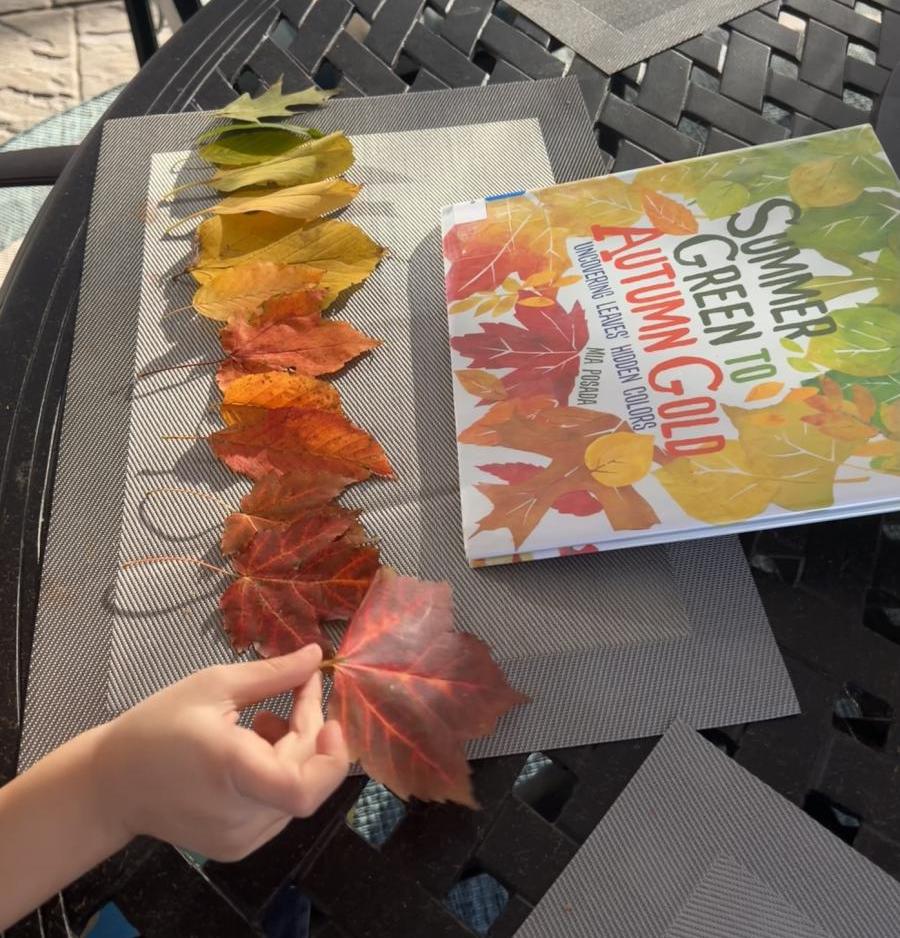September and October are great months to explore the wonders of fall through educational activities! The air feels crisp, the leaves shift into fiery colors, and the natural world is full of changes waiting to be noticed and understood. Whether you’re a parent or a teacher, fall offers countless opportunities to help kids slow down, observe, and think like scientists. All you need is a little curiosity and maybe a nature journal to capture your discoveries.
Let’s dive into five unique, science-inspired fall nature activities for kids that you can try with your kids this season.
1️⃣ Leaf Color Detectives
Instead of just collecting colorful leaves, invite kids to investigate why the colors change.
- Collect several leaves from the same tree in different stages (green, partly yellow, fully red).

- Compare them side by side in a nature journal.
- Ask: What do you notice about the patterns? Why might some leaves change sooner than others?
✨ Science Connection: As kids investigate leaf colors, they learn that leaves change color in fall because the green pigment (chlorophyll) fades, revealing other colors like yellow and red.
👉 For kids ready to go beyond observation, consider extending the activity with a simple leaf chromatography experiment using common household materials to separate the pigments. It’s a hands-on way to see the pigments inside a leaf.
2️⃣ Puddle Watch: Evaporation in Action
Fall often brings rain, which means puddles! Pick one puddle near your home or school to “adopt.”
- Have kids sketch or photograph the puddle daily or hourly.
- Mark its size with a stick, rock, or even string, then track how it changes.
- Notice what affects it most — sun, wind, or cooler nights.
✨ Science Connection: As kids observe the shrinking puddles, they learn about the water cycle and how evaporation, influenced by weather and temperature, causes this change.
3️⃣ Seed Travelers
Fall is seed season when plants are sending their “babies” out into the world.
- Go on a walk and collect different types of seeds (helicopters, acorns, burrs, puffballs).
- Record which ones travel farthest and why.
 Test how they move: drop, toss, or let them stick to your clothing.
Test how they move: drop, toss, or let them stick to your clothing.
✨ Science Connection: As kids test how seeds move, they learn about seed dispersal and how plants use wind, water, animals, and gravity to spread and survive.
👉 Want to explore seeds even further? Check out our Seeds Mini Unit for hands-on science activities or watch our free YouTube video on seeds for a quick introduction kids will love!
4️⃣ Shadow Shifts
As fall deepens, the days grow shorter and the sun sits lower in the sky. You can see this change in shadows.
- On a sunny day, trace your child’s shadow with chalk or string.
- Repeat at the same spot and time each week through October.
- Compare: Are the shadows longer? Shorter? Facing a different angle?
✨ Science Connection: Observing shadows helps kids see how Earth’s tilt and orbit affect daylight, seasons, and even temperature.
👉 If your kids love exploring shadows, consider our unit Shadows, Stories, & Adventures: An Enlightening Voyage with Peter Pan, which delves deeper into the science of light and shadows through playful storytelling.
5️⃣ Fall Sound Map
Instead of just looking, try listening to fall.
- Sit quietly outdoors with a nature journal.
- Draw a circle on the page, then record sounds in different directions (wind in trees, crunching leaves, migrating geese).
- Repeat in different spots (forest, playground, backyard).
✨ Science Connection: This activity encourages sensory observation and shows how ecosystems shift with the season. For example, insects buzz less while birds call more as they migrate.
Final Thoughts
Fall offers a front-row seat to transformation, and these fall nature activities for kids make it easy to slow down, observe, and wonder about the changes all around us. From leaves fading to shadows stretching and seeds scattering, each shift becomes an opportunity to spark curiosity and scientific thinking. Each shift is an invitation for kids to notice patterns, ask questions, and wonder about the “why” behind what they see. When we guide children to capture these changes in a nature journal, we’re not just creating keepsakes; we’re helping them practice the habits of mind that scientists use every day.
If you’d like to make fall explorations even more meaningful, the LMU Nature Journal Set provides a perfect space for children to sketch, write, and reflect as they explore the world around them.





